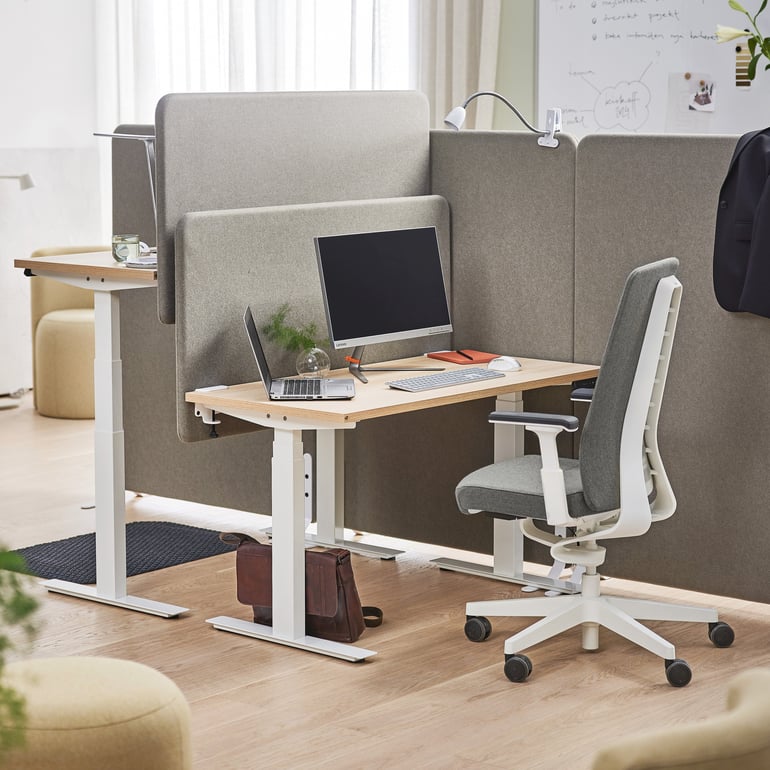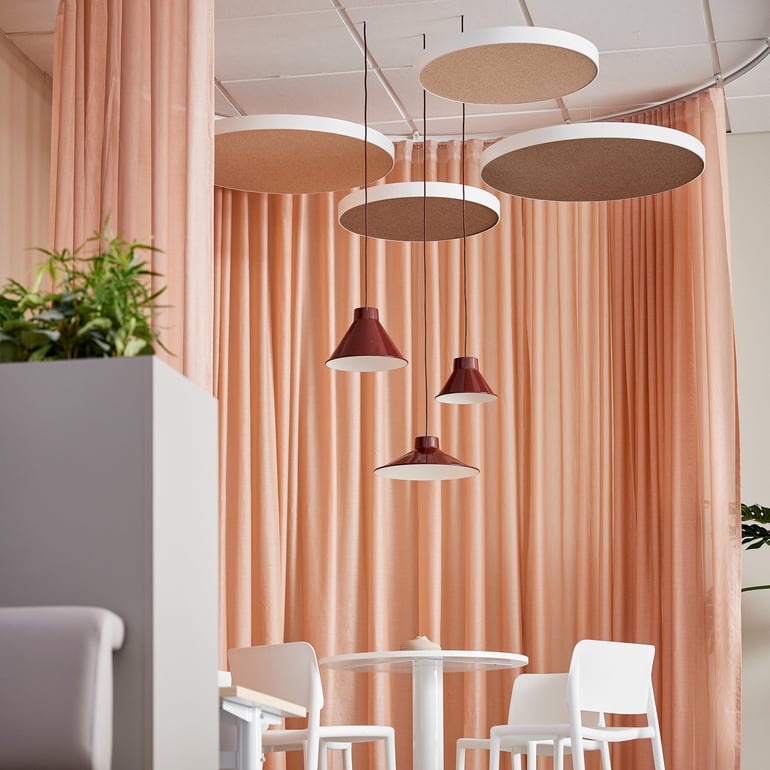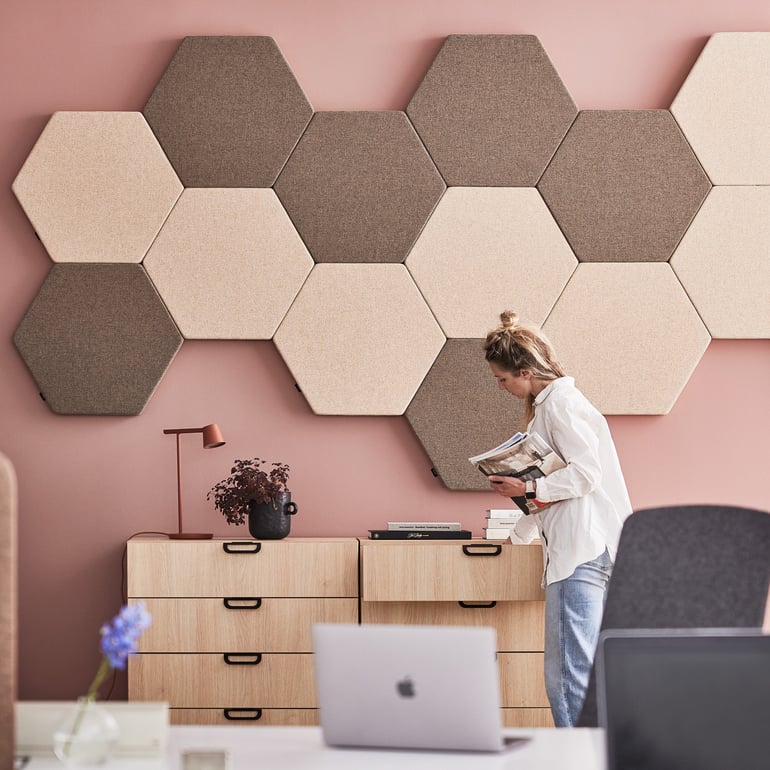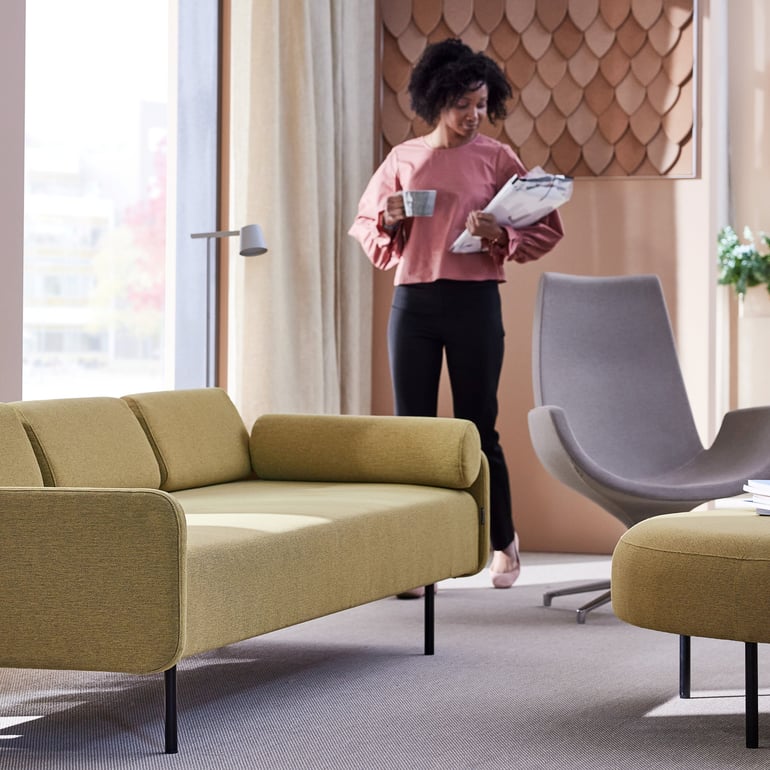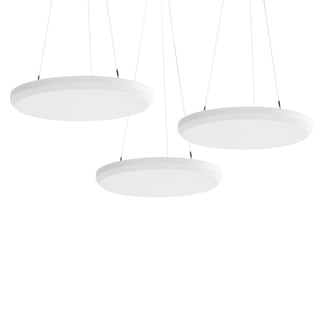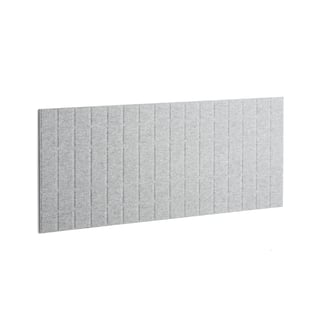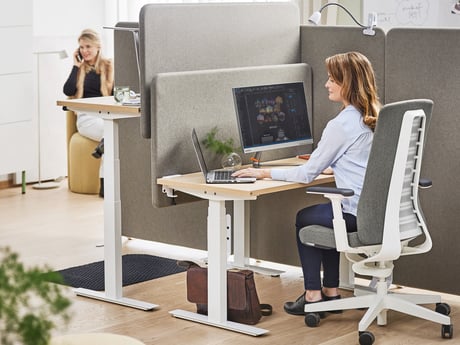- AJ Products IE
- Blog
- Ergonomics in the workplace
- Noise sensitivity at work: What it is and how to deal with it

Noise sensitivity at work: What it is and how to deal with it
The noise level in a work environment can have a major impact on both well-being and productivity. Noise sensitivity means that everyday sounds can feel unpleasant or overwhelming. For those affected, noise sensitivity can be a source of stress. But there are ways to improve the acoustic environment in the workplace, whether you are just a little sensitive to noise or suffer from conditions like tinnitus or misophonia. In this article, we explore what noise sensitivity is and how you can improve the acoustic environment at work!
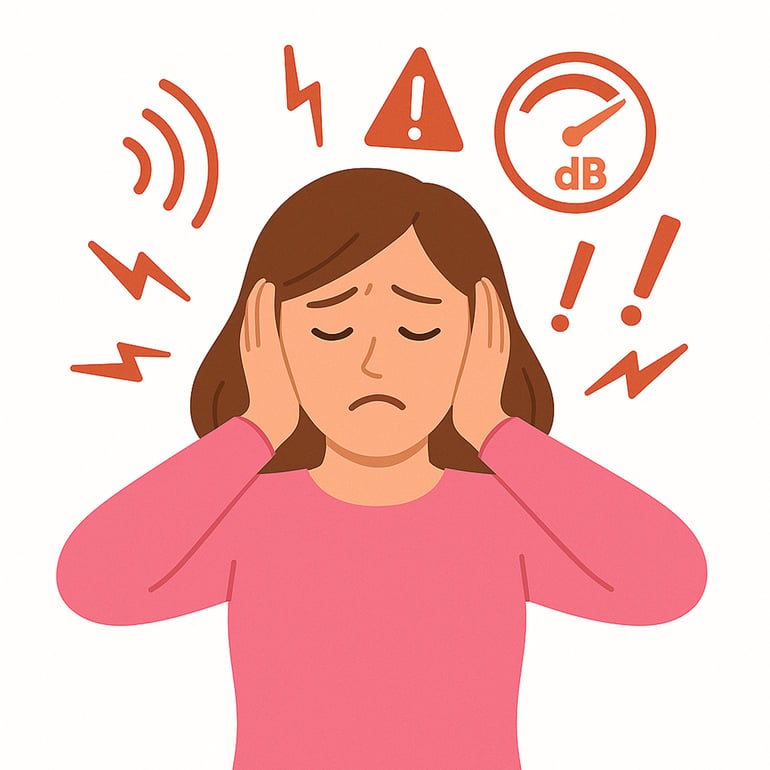
What is noise sensitivity?
Most people occasionally find certain sounds irritating but, for others, noise sensitivity is a constant challenge. Noise sensitivity occurs when sounds are perceived as louder or more intrusive than they actually are. In the workplace, common sounds such as phone calls, machinery or background conversations can become distracting to the point of affecting concentration and performance. There are many different reasons why someone might be sensitive to noise - some medical, other simply due to a higher sensitivity to sensory input.
Common symptoms of noise sensitivity:
- Headache
- Stress
- Fatigue
- Irritation
- Difficulty concentrating
- Poor sleep
Types of sensitivity
Noise sensitivity can range from trouble concentrating in noisy environments to medical conditions that affect everyday life. Here, we look at some of the different types of noise sensitivity, related conditions and symptoms that can impact how we experience sound.
Hyperacusis
Extreme sound sensitivity can make everyday noises, sounds most people would consider harmless, feel overwhelming or even painful. This condition is known as hyperacusis, and the most common cause is overexposure to high noise levels, whether from prolonged or sudden exposure to loud sounds. Hyperacusis can also resut from ear conditions or injuries and it is not uncommon for those affected to also experience tinnitus. It is a recognised medical diagnosis and can significantly affect a person's quality of life, both at home and in the workplace.
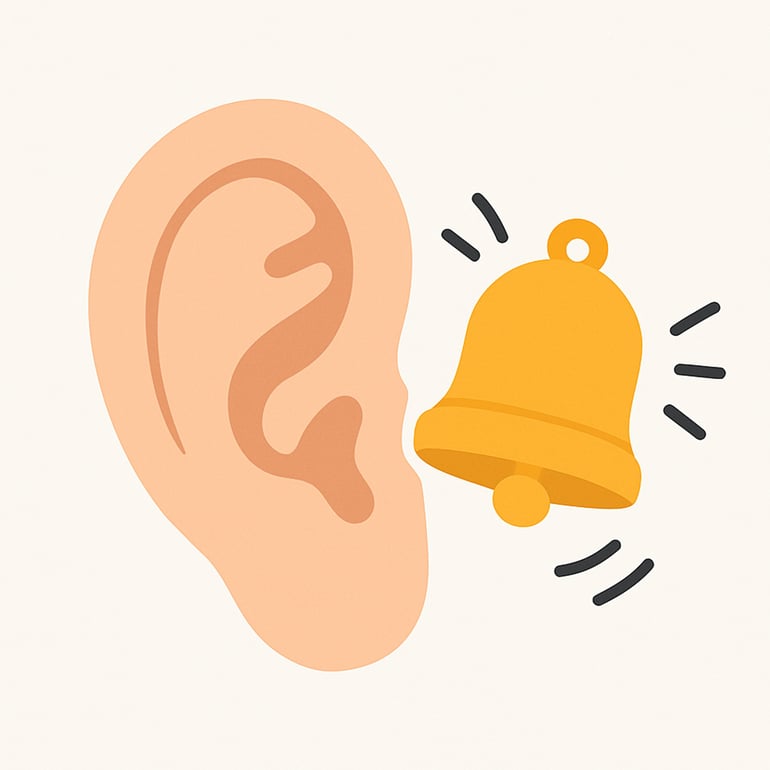
Tinnitus
Tinnitus is the perception of sounds, such as ringing, buzzing or whistling, that have no external source. It is a symptom rather than a condition in itself and can vary in intensity and the type of sound experienced. Tinnitus may be caused by exposure to loud noise, age-related hearing loss, ear infections or other underlying medical issues.
Misophonia
Misophonia is a neurological condition in which certain sounds, often related to human activities such as chewing, smacking or breathing, trigger strong negative emotional reactions in the sufferer. These reactions may include feelings of anger, irritation or discomfort. The exact cause of misophonia is not fully understood and can vary between individuals. Unlike hyperacusis, where sounds can be physically painful, misophonia causes an emotional response rather than a sensory one.
Hearing loss
Hearing loss refers to a reduced ability to hear sounds and can range from mild to profound, affecting one or both ears. It can be caused by ageing, prolonged exposure to loud noise, infections, genetic factors or ear damage. Hearing loss can impact communication and often leads to fatigue due to the extra effort required to listen. Many people with hearing loss use devices such as hearing aids, cochlear implants or hearing amplifiers. If you have hearing loss, you may still be sensitive to certain sounds, and in some cases, even more sensitive because of it.
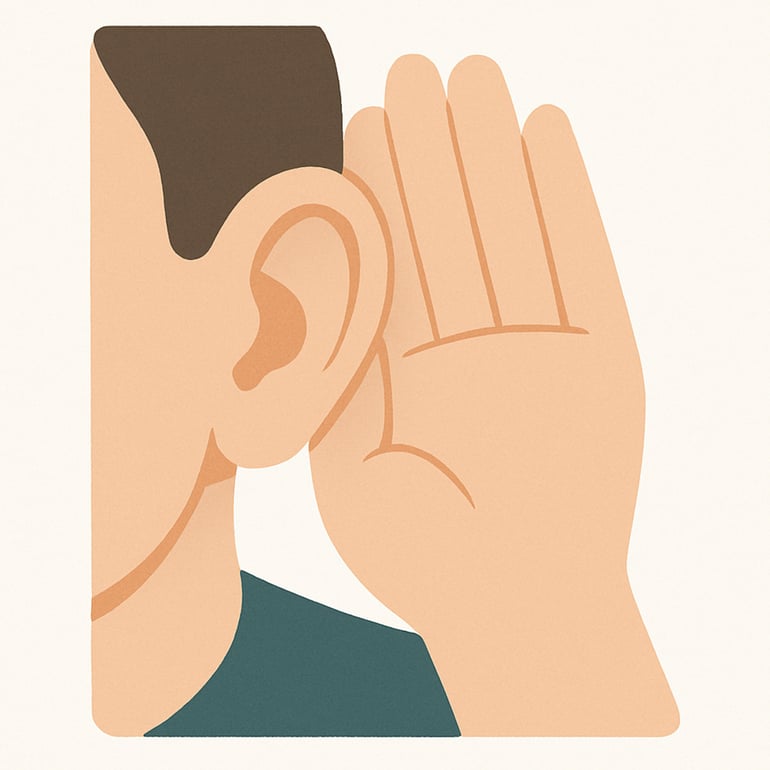
Noise sensitivity in neurodiversity
It is not uncommon for people with a neurodiverse conditions to be particularly sensitive to noise. For those who already have attention difficulties, a high noise level can contribute to poorer concentration and reduced ability to work effectively. In autism, hypersensitivity to sensory input is frequent and sufferers may experience mental and even physical discomfort from certain sounds. A 2015 US study published in the journal JAMA Psychiatry found that people with autism do not habituate to hypersensitivity in the same way as others, their brain activity and discomfort remains intense over time.
If you experience hearing difficulties or discomfort that affect your quality of life, it is important to seek professional advice for an accurate diagnosis and approrieate treatment.

What can you do?
There are several strategies you can try to help manage noise sensitivity in the workplace:
- Use headphones: Noise-cancelling headphones can help minimise distracting background noise. There are many different types available on the market today, from lightly noise-cancelling to fully noise-cancelling models. Regular hearing protectors can be a useful alternative in some environments.
- Create a quiet workplace: If possible, choose a quieter area of the office to work in. Many workplaces now offer smaller meeting rooms or designated focus rooms for individual work. Try to schedule in some time during the day to work in a calm and undisturbed environment.
- Manage stress: When noise stimulation is too high, stress can quickly build up. That's why it's important to take regular breaks and incorporate relaxation techniques to help reduce tension and reset your focus. A short walk indoors or even better, outdoors if possible, can make a big difference.
What should your workplace do?
When it comes to managing noise in the workplace, employers have legal responsibilities to protect their employees’ health and wellbeing. These include:
- The Safety, Health and Welfare at Work (General Application) Regulations 2007 (SI No. 299 of 2007): Under these regulations, Irish employers must assess and control risks related to workplace noise. This involves taking steps to reduce noise exposure, providing appropriate hearing protection, ensuring noise levels do not exceed legal limits, maintaining noise-control equipment, offering staff training, and conducting hearing checks where necessary.
- Noise limits: Employers must ensure that noise levels do not exceed safe exposure limits set out in the regulations (typically a daily or weekly exposure limit of 85 dB(A), with an action level at 80 dB(A)).
- Risk assessment and control measures: If there is noise, employers must carry out risk assessments to identify and address any potential noise-related hazards.
- Information and training: When noise exposure reaches certain levels (usually 80 dB(A) as an action value), employers must provide workers with information and training on noise risks and protection methods.
Interior design for a better sound environment
There are several ways to significantly improve the acoustic environment in the workplace. And it's not just for sound-sensitive colleagues, everyone benefits from a comfortable sound environment. Here are some product suggestions to help achieve that:
Desk and floor screens
Desk and floor screens help you create a more private and peaceful workspace by reducing noise and minimising visual distractions from movement in the room. Our range includes desk screens in different sizes so you can customise them to suit your workstation. Our floor screens are available in a range os styles so you can choose the size, colour or design that best suits your needs.
Acoustic ceiling panels
Installing acoustic ceiling panels is an effective way to stop noise from bouncing upwards and echoing around the room. In addition to significantly reducing noise, sound absorbing ceiling panels also add a stylish touch to your interior. Our range includes everything from acoustic corner noise traps to hanging panels.
View sound absorbing ceiling panels range
View sound absorbing ceiling panels range
Acoustic wall panels
With acoustic wall panels you can easily reduce noise and create a pleasant sound environment. The advantage of sound absorbing panels is that you can freely mix and match different colours, styles and models giving you both style and functionality in one solution!
View acoustic wall panel range
View acoustic wall panel range
Lounge furniture
All upholstered seating also acts as an effective sound absorber, especially for low-frequency sound that affect speech clarity. One advantage of sofas and armchairs is their large size, which allows them to absorb a significant amount of sound. In our range you'll also find smart acoustic sofas designed to improve the sound quality.
Explore our ergonomic range of office furniture:
Top tip: We asked an acoustics expert for advice on how to improve the sound environment in schools, but of course many of the same principles can also be applied to office environments. Learn more about acoustics and sound in our blog!
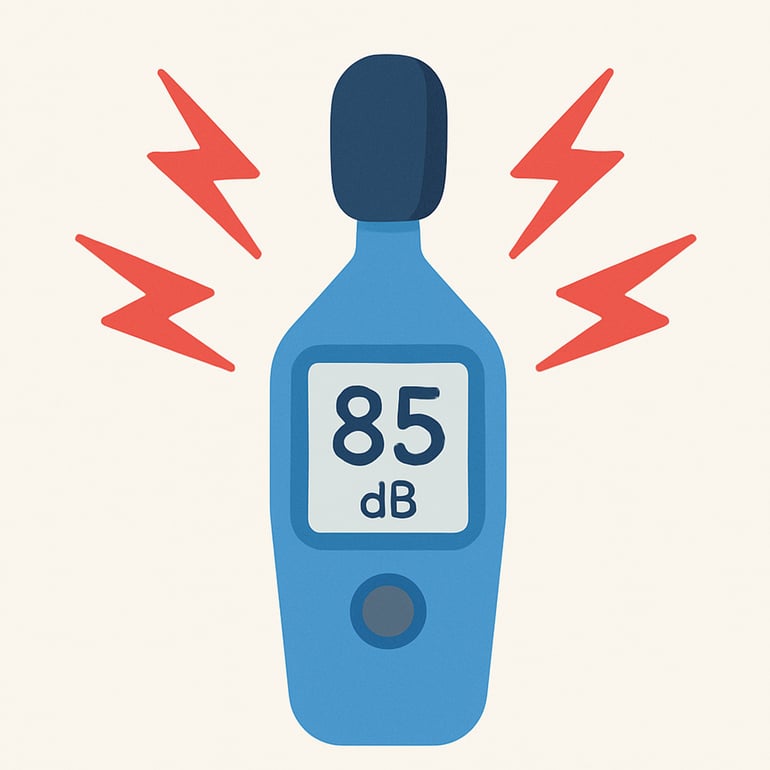
Did you know that workplace noise limits can vary greatly depending on the country and their specific regulations? In Ireland, the following limits applies according to the Health and Safety Authority (HSA):
- Daily or weekly noise exposure: 85 dB(A) averaged over an eight-hour working day.
-
Peak sound pressure: 137 dB(C) for short time exposure.
Summary
Noise sensitivity is a challenge that can affect both the work environment and an individual's ability to perform their job. But by raising awareness and introducing a few simple adjustments, both employers and employees can help create a more confortable and productive working environment.
